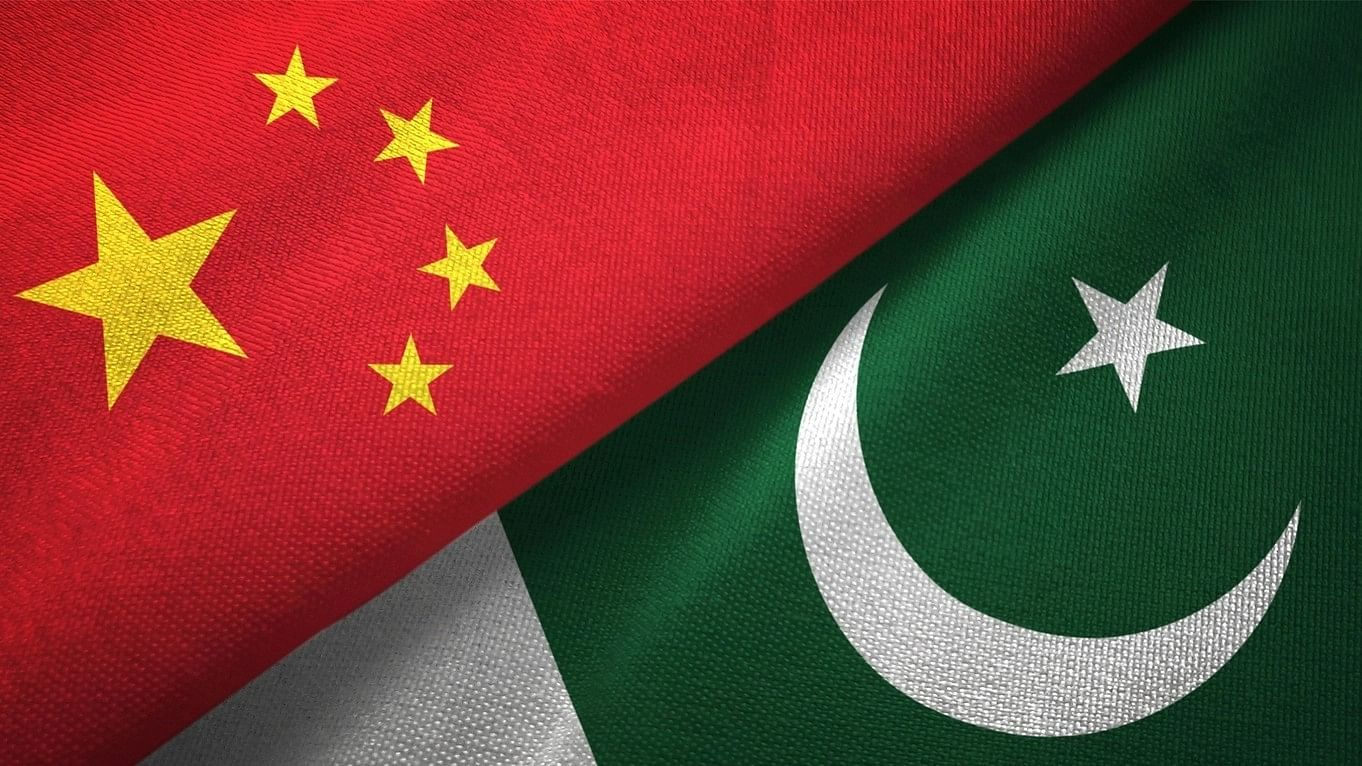
China and Pakistan flags.
Credit: iStock Photo
A tough diplomatic road lies ahead for the Narendra Modi-led government, now in its third term but this time as a weakened coalition government in which regional allies hold the cards, as India negotiates a turbulent global order, especially in the wake of the ongoing Russia-Ukraine and Israel-Hamas conflicts.
India, with its strategic stakes in West Asia, has reason to worry as the 8-month-long Israel-Hamas conflict rages on. This should worry the new government as it will have to do a fine balancing act among the competing interests of Israel and Palestine as also the Arab world, all of whom India counts as friends.
While Prime Minister Modi sought to reach out to India’s immediate neighbours by inviting their leaders for his swearing-in, it was of little relevance given that China remains the real challenge. Indeed, the new government will require a renewed focus on India’s hostile neighbours, China and Pakistan, who present a collusive threat. While tensions with Pakistan have been par for the course for successive Indian governments, it’s China that has posed the most serious and daunting challenge since Modi came into office.
China has been using its salami-slicing tactics to chip away at Indian territory, challenging Indian claims with impunity. In May 2020, New Delhi got a taste of Beijing’s muscle-flexing and hegemonic ambitions in good measure when the People’s Liberation Army made a series of incursions into eastern Ladakh. The incursions led to violent clashes between the rival troops in the Galwan Valley in June that year, which left 20 Indian Army soldiers, and an indeterminate number of Chinese soldiers, dead.
The tense face-off along the Line of Actual Control is into its fifth year now. It has proven to be an intractable problem, with no resolution so far despite multiple rounds of military and diplomatic talks. The new government will have to renew efforts to achieve complete troop disengagement and de-escalation.
India-China relations, which had once appeared to be on an upward trajectory, have remained decidedly frosty. Modi 2.0 had conceded that the situation is “very fragile” and frequently reiterated the need for “peace and tranquillity” and restoration of status quo ante on the border for normal ties to resume. The real test for Modi 3.0’s diplomatic skill will lie in its ability to resolve the festering dispute without ceding any strategic space to China. A possible meeting between PM Modi and Chinese President Xi Jinping on the margins of the upcoming SCO Summit in Kazakhstan could, perhaps, help break the impasse.
Concurrently, the new government will need to keep a watchful eye on Beijing’s strategic embrace of Moscow. While India has traditionally enjoyed close ties with Russia, which also remains New Delhi’s largest arms supplier, Moscow’s growing ties with Beijing is a major concern. Indeed, Russian President Vladimir Putin was in Beijing in mid-May to further cement their convergence of strategic interests and alignment against the West. China has proven to be a valuable ally for Russia in its conflict with Ukraine.
India’s pronounced tilt towards the US and its efforts to diversify the sourcing of its military equipment have caused dismay among the Russians. Moscow has also not minced words when talking of the Quad, of which India is a member, describing it as a formation aimed at containing China. Nor has it hesitated in criticising the US’ Indo-Pacific strategy, of which India is a vital cog in the wheel. Modi 3.0, therefore, will have to continue walking the diplomatic tight-rope between Moscow and Washington in view of India’s own strategic imperatives.
While China may be the biggest headache for the new government, it will also need to tackle its perennial problem, Pakistan. A persisting two-front challenge bogs India down, hobbling its ambitions to become a global power. New Delhi-Islamabad ties have been virtually non-existent in recent years, after the nose-dive due to the Pathankot terror strikes in 2015 and then Pulwama in 2019, which led to the retaliatory Balakot airstrike. Diplomatic ties remain downgraded, with no representation at the High Commissioner-level in New Delhi and Islamabad since the August 2019 revocation of Jammu and Kashmir’s special status.
However, there appears to be a sliver of hope to restore ties. Former Pakistan PM Nawaz Sharif, whose party the PML-N is now in power in Pakistan, recently conceded that Gen. Pervez Musharraf violated the Lahore Declaration signed between him and PM Atal Behari Vajpayee. While the new government may not want to be seen as making the first move at restoring ties, it should reciprocate if Islamabad reaches out. Sharif still seems the best bet for the two neighbours to get relations back on track. India simply cannot afford to have two hostile nuclear-armed neighbours in perpetuity along its borders.
(The writer is a senior New Delhi-based journalist)